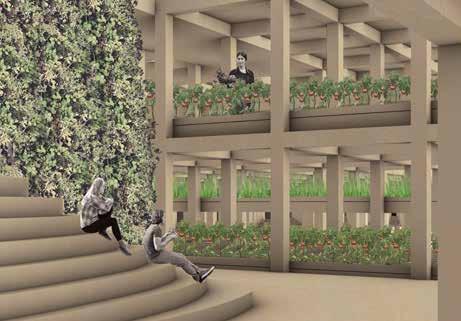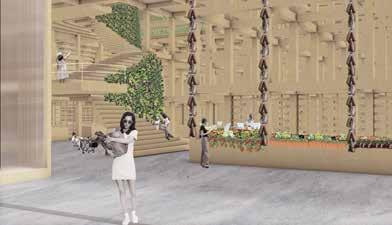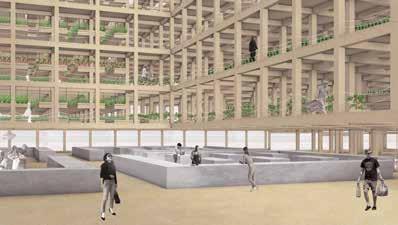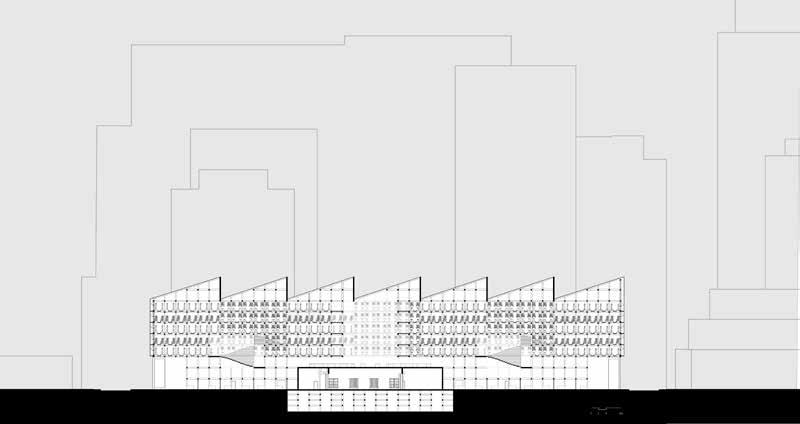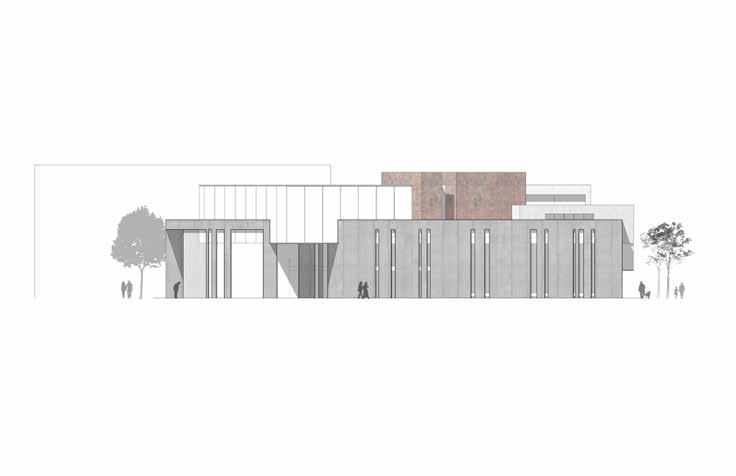
3 minute read
common ground
exposure
michael gross lindsey harbord
Advertisement
m.arch 1 arch 616: comprehensive studio instructor: keir stuhlmiller This museum of architecture will bring awareness to fundamental design principles such as scale, light, and materiality and how it is used in design and architecture. By highlighting these principles, the project intends to personally connect the user to their environment allowing them to value their surroundings and understand how it influences their own experiences. Through collaborative partnerships with international architects and designers, individuals will also be exposed to global influences of design practice and ideals that will impact the future of local design.








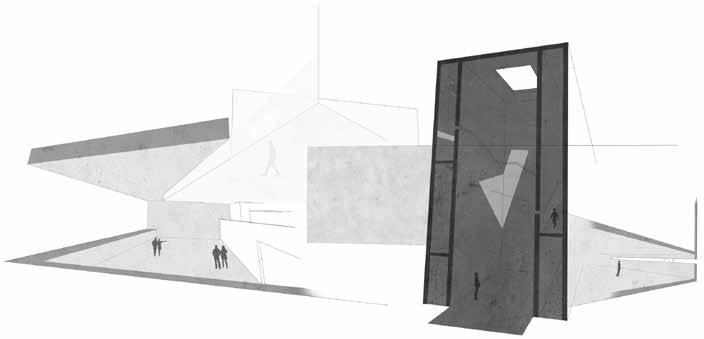


the conscious society
alexis valentine
m.arch 2 arch 702: senior research ii instructor: MBAC (various members)
1. Nik Heynen, Hilda E. Kurts, and Amy Trauger, “Food Justice, Hunger and the City,” Geography Compass 6(5) (May 2012): 307-308, https://doi.org/10.1111/j.17498198.2012.00486.x. 2. Slow Food “prevents the disappearance of local food cultures and traditions, counteracts the rise of fast life and combat people’s dwindling interest in the food they eat, where it comes from, and how our food choices affect the world around us.” (Slow Food, 2015). Our society is unconscious. Food has been inextricably connected to our diverse Canadian identities and cultures. Food is a constant player in every spectrum of social gathering and connection. Neoliberal ideology has now commodified food, using it as a mechanism for wealth creation.1 The relationship between food production and consumption has been separated by a linear global corporate food chain. This system has worsened our global ecological footprint, has prevented access to decent and culturally appropriate food to marginalized cultures and socio-economic classes, and is blinding us of the origins of where our food comes from. Private developers capitalize on capitalism by scattering intermediate spaces between buildings and the street that see little social, cultural, or ecological benefit. Local food movements have recognized the urgency of providing equitable access to food. Food must be de-commodified and delinked from the corporate global food system to reconnect the urban population to food production and consumption, and revitalize the social, cultural, and ecological benefits that locally grown food can provide. Urban brownfield sites create opportunities to generate greater social, cultural and ecological impacts to turn an unconscious society into a conscious one by:

i. Demystifying local food production, distribution, and consumption through the design of spaces that are transparent, open, flexible, and accessible year-round. ii. Recalibrating the food production, distribution, and consumption process by structuring the system as a continuous journey rather than one that has an end point. iii. Program that can be self-organized where food production, distribution, and consumption co-exist appropriately in a Canadian urban setting, while simultaneously providing gathering and educational spaces that amplify food production as a humanized process rather than a commodified one. iv. Weaving local food hubs into the urban fabric of communities to disseminate a slow food 2 movement by designing architecture that is easily deployable across a multiplicity of in-between spaces of cities.
